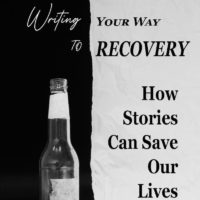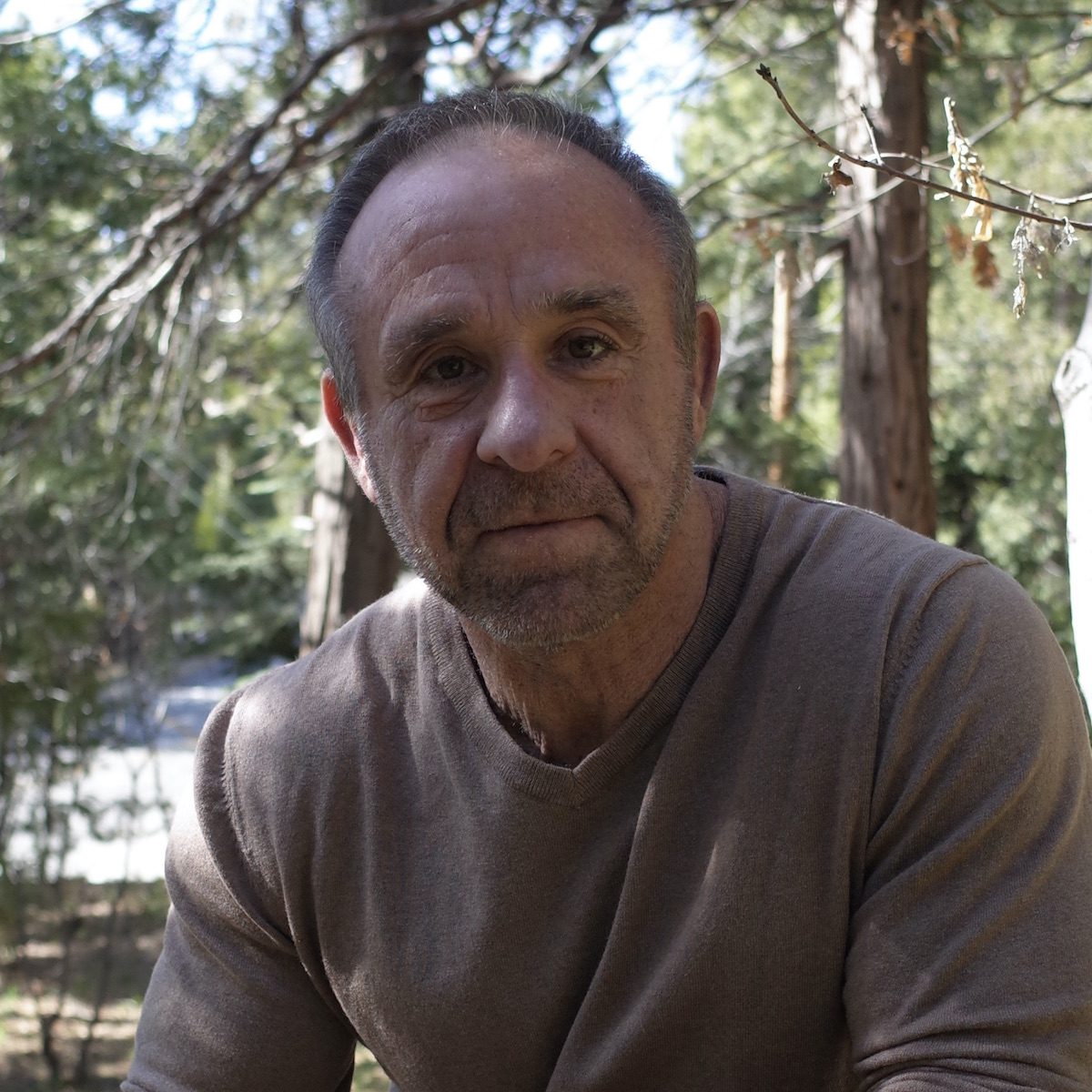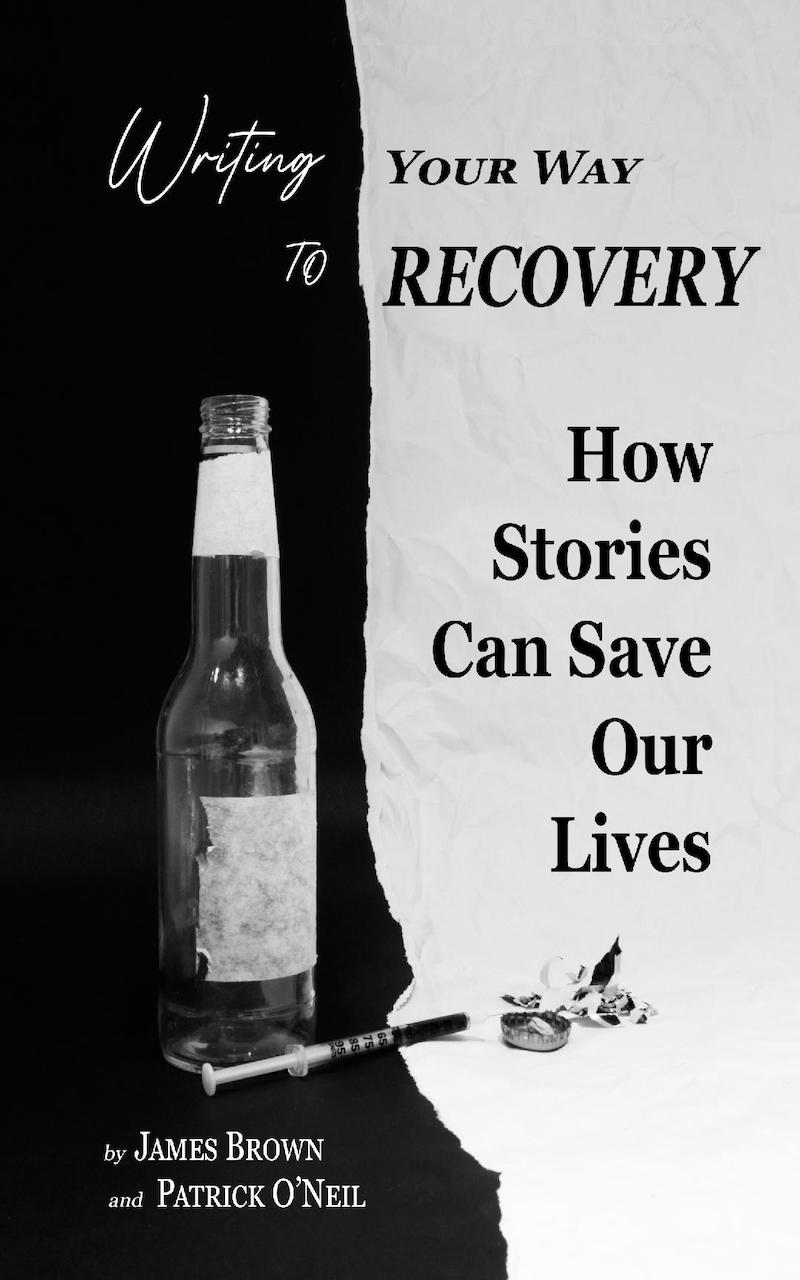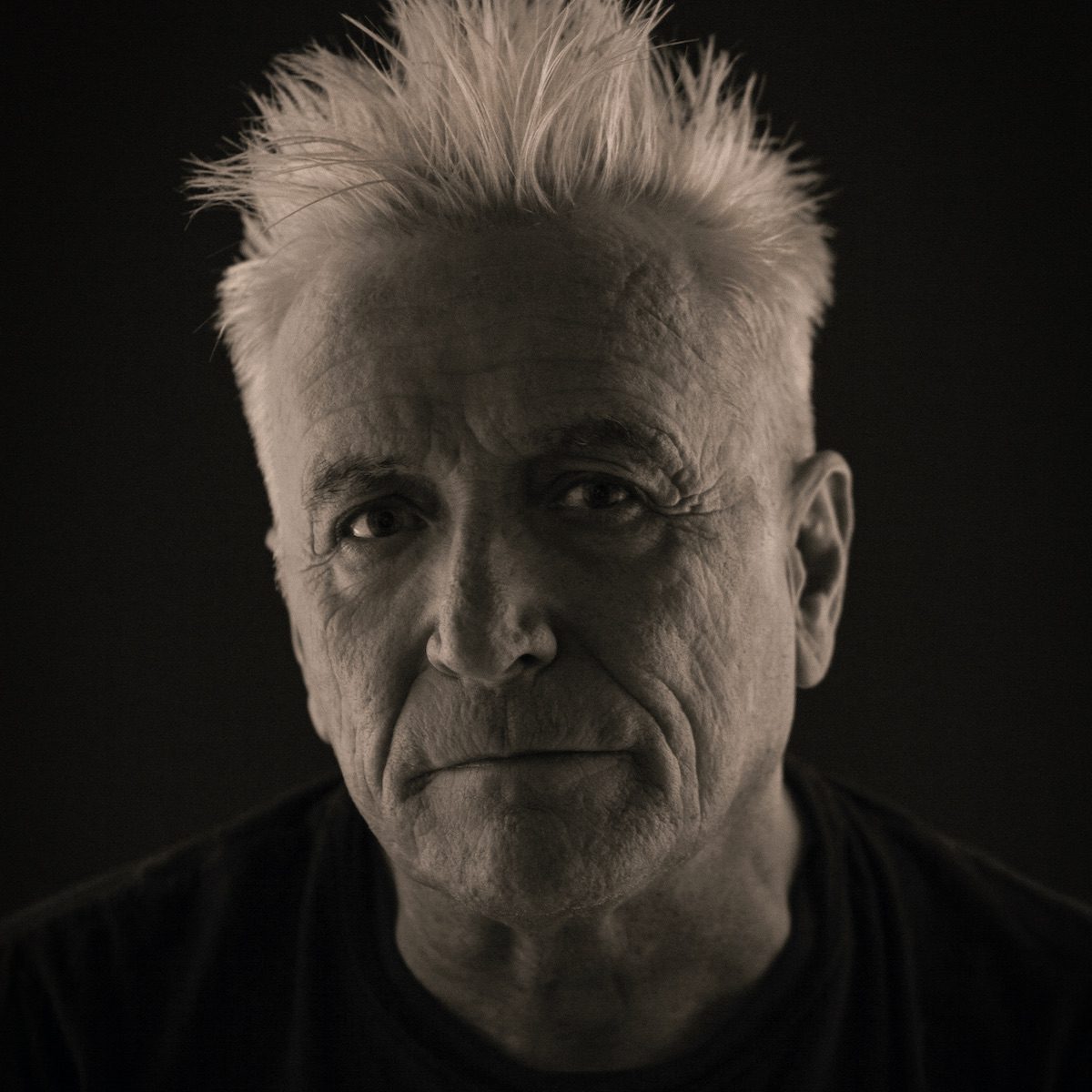Memoirists James Brown and Patrick O’Neil’s new collaboration, Writing Your Way to Recovery: How Stories Can Save Our Lives, asks us to consider what might happen if we harness the tools of creative writing to rethink, and, ultimately, rewrite, our stories of addiction and recovery. Comprised of craft lessons, recovery insights, and writing exercises, the book is a thoughtfully articulated new take on how addiction and recovery writing can move from catharsis to craft.
The recipient of the Nelson Algren Award for Short Fiction, James Brown is the author of three memoirs: The Los Angeles Diaries, This River, and Apology to the Young Addict. Patrick O’Neil is the author of the memoirs Anarchy at the Circle K (forthcoming) and Gun, Needle, Spoon.
I had a chance to talk all things writing and recovery with James and Patrick—via Zoom, of course—in an energetic, wide-ranging, and fun conversation.
***
The Rumpus: James writes in the book that if we were to add up the time you two spent abusing dope and booze, it would come to roughly fifty years. However, the two of you also now share more than thirty years of sobriety, which means there’s no debating that you two have a lot of wisdom to share when it comes to addiction and recovery. Tell me about how this book came to be. Where did it begin?
James Brown: After my third memoir, Apology to the Young Addict, was published, I wasn’t sure what I wanted to write next. At the same time, I wanted to continue writing about what I like to think I know all too well, which is the subject of addiction, and since I’ve been teaching creative writing and publishing for thirty-plus years, I also like to flatter myself that I know something about creative writing as well. So, I put the two together, thinking that I could write a book that could be helpful to those suffering from addiction, fusing creative writing techniques with issues related to recovery. I was only about thirty or forty pages into a rough draft of the manuscript when it occurred to me that the book could benefit greatly from another point of view, and Patrick O’Neil, being a recovering addict and successful writer, as well as a good friend, immediately came to mind. I approached him with the idea of us working together, and when he accepted, things really took off. His contributions to the book proved immense.
Patrick O’Neil: It was an easy idea to say yes to. I’ve been a fan of Jim’s work since back before I was in graduate school, and we’ve known each other for many years, so it was an honor to work with him. We’re both part of the Los Angeles literary scene, we’ve participated with each other’s book launches, and, of course, we’ve talked recovery. The book was a chance to combine multiple things we’re passionate about—writing, teaching, and sobriety. Jim’s concept was building on the “journaling” aspect that’s traditionally been a big component of getting sober by tapping into how we had not only taken our stories from the old drinking and drugging days to use as the basis for our memoirs but had also utilized the process of writing to move on from our pasts.
Rumpus: There’s no doubt that the book succeeds on those terms.
O’Neil: That’s so great to hear. There’s just something about getting all that old dark shit down on paper that’s cathartic. We thought if we could point someone in the direction that helped us, it’d be a real service to those that needed it.
Rumpus: The idea of transitioning from journaling to writing, and ultimately, to thinking about writing in craft terms, felt so useful to me as I moved through the book. Along those same lines, you’re both writers who’ve written memoirs. As a memoir writer myself, I’ve found the process to be a solitary affair. What was it like to collaborate on this book? What were some of the challenges you faced, and what were some of the unexpected gifts you received along the way?
Brown: I’ve collaborated a few times with producers and directors on books of mine that they optioned, and though I’m grateful that they liked my work enough to want to adapt it for film, the collaborations always ended up something of a mess. Too many cooks in the kitchen. Working with Patrick was a much different experience. We clicked from the beginning, in part because we each made a point of respecting each other’s personal voices and visions, and also because our experience with addiction and recovery were similar. His work fed off mine, and mine fed off his, and the combined effect was synergistic.
James Brown
O’Neil: I couldn’t agree more. Working with Jim was seamless. We were totally on the same page. Writing, for the most part, isn’t a group sport, and I’m not the best team player. I’ve collaborated with a few writers on projects, with mixed results. But Jim and I found our rhythm quickly and we riffed off each other. I’d read his chapters and it’d inspire me to go deeper with mine, and I think that worked both ways.
One of the project’s unexpected gifts was that Jim had written about thirty pages before he approached me, and when I signed on to the project, he sent those pages to me, and I was able to hear his voice, which in turn I adopted. Or maybe it was mutated? [Laughs] But that got a lot of the “finding the voice” part new projects always require out of the way.
Rumpus: James writes the first chapter of the book, aptly titled, “So What Is This Book About?” and Patrick writes the second, which is called, “Getting Started.” You two alternate chapters throughout the rest of the book, which makes me wonder how much of the book’s organizing structure comes from your own movement through sobriety. Can you talk a little bit about how your own journeys through sobriety impacted the way the book came together?
Brown: Answering this question could, on the one hand, point out a flaw, and on the other, a strength of the book. What I mean is that we had from the start a definitive beginning and end in mind, and we certainly knew what we wanted to write about, but the middle section, the backbone of the book, wasn’t outlined. We didn’t start with a “plan” that would impose a sequential structure on the book as you’ll find with many self-help books—”you need to do this first, then this, then this next,” and so on.
O’Neil: Right. Because while Jim and I have similar journeys in recovery, they are also totally different, if that makes sense. The connecting theme for both of us, though, was carrying the guilt and shame from all the screw-ups, lies, dishonesty, and bad behaviors that we engaged in because of our drinking and using. That’s the stuff that will keep you stuck in the cycle of getting loaded to forget, which in turn creates even more damage and chaos, which, of course, you’ll need to get even more loaded to forget.
Brown: Frankly, achieving sobriety, like so many other things in life, doesn’t necessarily follow a linear path. What’s important, and what I think we accomplished, is covering the major, real-life issues affecting those struggling to get clean and sober. Relapse. Triggers. God. Not God. Dealing with our past, our conscience, matters of guilt, remorse, forgiveness. Each chapter begins with a personal story of our own followed by a creative writing exercise designed to help the alcoholic-addict gain greater insight into themselves and the nature of their addiction, and thereby aid in their recovery.
O’Neil: Once you get sober, writing about that guilt and shame is where the healing comes in. It may seem counterproductive to revisit the past when you’re trying to move on from it, but, if you’re like me, then your memories are constantly present, without even trying to write about them, and being haunted by the past can be exhausting and depressing. What we’re offering is a chance to dig in and really examine the emotions associated with the past, and then work your way through them to let go.
Rumpus: As I was reading through the book, it felt as if it was both a guide to unpacking recovery and a guide to writing memoir. Many of the writing exercises reminded me of some of the fundamental ideas that have been posited over the years about writing creative nonfiction. I’m thinking of Philip Lopate’s “double perspective,” and Vivian Gornick’s “situation and story,” and Sue William Silverman’s “voice of innocence and voice of experience.”
Will you talk a little bit about what sort of work you were hoping people would produce in response to these exercises? Were you thinking about memoir in particular?
O’Neil: I know I had several possibilities in mind, but I don’t think it was memoir necessarily. I wanted to help the newcomer make sense of recovery and create a writing experience that wasn’t just step work or journaling. I also hoped that in doing so, Jim and I could open the door for anyone who wanted to write their own addiction memoir, but maybe didn’t know how or where to start.
Rumpus: In “Play the Tape All the Way Through,” Patrick writes, “There is no logic to addiction.” That may be true, but there’s logic to recovery, right? And logic in writing about addiction? Which makes me wonder if that’s what we’re ultimately trying to do by writing our addiction and recovery stories.
Brown: This is really Patrick’s question, since he wrote that section, but I’ll add my two cents anyway. In saying that “there’s no logic to addiction,” I think the implication is that, despite the toll addiction takes on us, from hurting and harming those we love, losing our jobs, our families, our self-dignity, our sense of self-worth and moral values—in the face of all this, and knowing full well that we’re killing ourselves, we continue to drink and use. That’s the “no logic” part. Any sober, sensible person would realize the damage they’re causing and do everything within their power to stop it at its root cause.
But is there logic to recovery? Absolutely. Assuming you acknowledge the destruction you’re causing, and you want to turn your life around, there are certain steps you must take, the first being that you must wholeheartedly admit to yourself that you have a serious, life-threatening problem. You certainly can’t fix a problem that you don’t recognize. Writing about our addiction and recovery helps us to come to terms with our illness, to “see it” in ways we couldn’t ordinarily “see” if we hadn’t put pen to paper. And that “seeing” can be enlightening, if not cathartic.
O’Neil: I’ll add that most addicts and alcoholics navigating substance-abuse treatment, twelve-step meetings, and sobriety are bombarded with the concepts and nomenclature of recovery, and it can be daunting. At times it can even feel like learning another language entirely. Words like forgiveness, acceptance, willingness, honesty, and humility are tossed around as if we should know what they mean. Coming from our collective past of abusing substances, we’re so removed from our feelings and values that accessing anything other than anger, shame, guilt, and fear seems impossible. Plus—especially with twelve-step programs—there’s a heavy reliance on a “higher power” and spirituality, and that can freak people out. All of that combined can make the whole recovery package intimidating enough to send the suffering addict/alcoholic running back into a relapse.
However, given the chance to write from our perspective, there’s huge potential, through self-introspection, for discovery of our true selves, allowing us to gain some self-awareness, and, in turn, learn to be accepting, non-judgmental, and present. With that in mind, Jim and I took on some of the traditional recovery concepts and broke them down into writing exercises where (hopefully) the language was more accessible and less dogmatic. Essentially, we’re asking that you tell us your story, and in doing so, learn something about yourself along the way.
Patrick O’Neil
Rumpus: I was struck throughout the book by all the times you reminded readers to take care of themselves while writing. This felt so important to me, because writing about our experiences with addiction and alcoholism can be treacherous and triggering. I felt that writing my own story—the way it turned me upside down at times, the way it fucked me up when I least expected to. You devoted an entire chapter to triggers and one to writing a relapse story. Tell me about how you approached triggers and relapses—not just in those chapters, but throughout the writing process.
Brown: Although writing about our addiction may ultimately be cathartic, or at the very least broaden and deepen our perspective and understanding of our illness, it can also be traumatic. Writing sometimes requires us to recall certain events, people, and places that we’d prefer not to revisit, and in recalling these memories, we might be putting ourselves at risk of relapsing.
Instead of seeing our flaws and shortcomings as things we need to change, we might instead feel so overwhelmed that we want to reach for the first thing that we once believed gave us relief from our worries, troubles, and negative self-image. And that thing, of course, is a drink or a drug, which as we ought to know by now, doesn’t offer relief at all, and simply delivers more misery, the very misery we’re trying to escape.
Rumpus: Yes! I know precisely what you mean. Which reminds me of how the writing exercise in “Close Calls and Narrow Escapes” has the reader imagine a scenario where she almost gives in to the cravings and relapses, but instead makes the right choice in the end. This feels incredibly useful for both writers and those in recovery—the imagining of a successful self. Tell me about your thinking behind this exercise and why it felt important to include.
Brown: My thinking on this chapter has everything to do with reimagining ourselves as “winners” instead of “losers.” So many alcoholic-addicts, myself included, see themselves in simple terms of good and bad, winners and losers, and I think it’s both useful and necessary to view ourselves as succeeding. If we continue to imagine ourselves as “failures,” as “doomed,” then that’s likely how our story will play out in real life. On the other hand, if we imagine ourselves confronting our addiction and being able to overcome it, that may well play out to our advantage in real life. That’s the hope of the assignment. That’s the bottom-line goal.
Rumpus: Regarding the idea of confronting your addiction and overcoming it, you’ve both now achieved long-term sobriety after years of wondering if you’d ever make it. How did writing play a part in your journeys? More so, how did it save your lives?
O’Neil: I write about this in our book. I wasn’t a writer from an early age. I’m dyslexic and had a hard time in school as a child, especially with spelling. I was a visual artist and then a musician, both of which I think of as storytellers, but in a much different way. It wasn’t until I was incarcerated that I tried my hand at writing.
I’m someone who needs a passion. Art, music, and heroin used to be that passion, but when you’re locked up, music and art are not readily accessible (drugs are, but that’s a whole other issue). In county jail, I attended a few of the adult-education classes that San Francisco County was offering, just to get out of my cell and do something. One of them was a creative writing class and it grabbed my interest. But first I had to relearn how to read and write, as I was practically illiterate. Sadly, pre-heroin, I was an avid reader. But after eighteen years of hardcore addiction, I hadn’t even read a newspaper in longer than I cared to admit. My vocabulary was woefully lacking, my handwriting practically illegible. Thankfully, there were a ton of books available (most of them pretty bad) and my family sent more (definitely better books). In between, I did crossword puzzles and wrote in my journal. Slowly, I gained confidence and started writing about people I knew, crimes I committed, and life in jail.
When I was sentenced to state prison, I joined a writer’s group and kept at it. Every week, we’d share and critique our work. I got a rush when my stories were accepted and even admired. When I was paroled, I kept at it. Back in the world, I started this new thing everyone else was doing called a blog. I gained a loyal following. I kept writing, and somewhere in all that, I started to think of myself as a writer. But I didn’t think anyone else did. My father, Wayne O’Neil, was a professor of linguistics at MIT, and he encouraged me write. In fact, he advised me and helped edit my first books. I learned so much from him, but I wanted to learn more. He pushed me to get my MFA in creative writing. At six years sober, I went to graduate school. I found my tribe. I found my passion.
Writing gave me an identity in a time when I was carrying a lot of other labels: fuck-up, loser, ex-felon, former junkie, and person-in-recovery. Nowadays, I still carry most of those [laughs], but I can add “writer” and “author” to the list. That gives me purpose, which, in turn, has literally saved my life.
Rumpus: That’s such an inspiring and powerful story, Patrick, and I appreciate you sharing it. You and Jim have both been on incredible journeys through recovery. You know, while reading the book, I couldn’t help but think of you two as sort of a modern-day Bill Wilson and Bob Smith (AA’s founders), two alcoholics working together on a book that I know will ultimately change some lives. And to that I say, well done. It’s been a true joy reading it and playing a small part in getting some eyeballs on the pages. Which brings me to my final question: what’s your hope for this book?
O’Neil: We hope our stories and writing exercises can help the addict/alcoholic/writer dissect their fears, resentments, guilt, shame, and anger. And, in the end, come away with a new sense of themselves (and a kick-ass memoir).
Brown: Absolutely. And building on that, Patrick and I ultimately want to help alcoholic-addicts reclaim their lives. As alcoholic addicts ourselves, we have only our experience, strength, and hope to give. To quote from the book, though, which I think sums it up quite nicely, “as authors and teachers, we add to this offer the small but perhaps very important tool of creative writing.”
***
Photograph of James Brown by Nathan Brown. Photograph of Patrick O’Neil by Brian Looby.
***
Voices on Addiction is a column devoted to true personal narratives of addiction, curated by Kelly Thompson, and authored by the spectrum of individuals affected by this illness. Through these essays, interviews, and book reviews we hope—in the words of Rebecca Solnit—to break the story by breaking the status quo of addiction: the shame, stigma, and hopelessness, and the lies and myths that surround it. Sisters, brothers, mothers, fathers, adult children, extended family members, spouses, friends, employers or employees, boyfriends, girlfriends, neighbors, victims of crimes, and those who’ve committed crimes as addicts, and the personnel who often serve them, nurses, doctors, social workers, therapists, prison guards, police officers, policy makers and, of course, addicts themselves: Voices on Addiction will feature your stories. Because the story of addiction impacts us all. It’s time we break it. Submit here.







